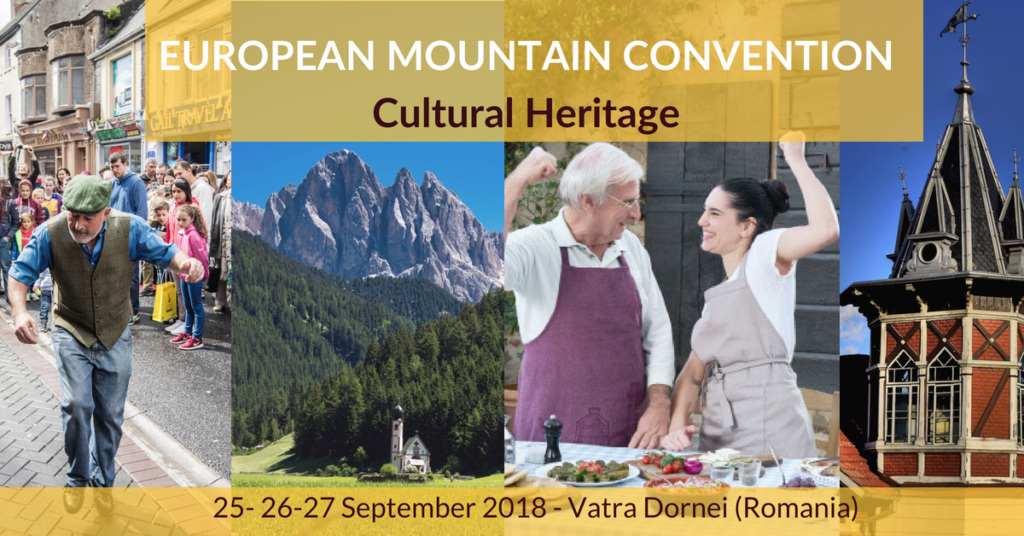It is time to better preserve and valorise mountain cultural heritage and to turn it into a driving force for future development, to revitalise mountain areas and strengthen their attractiveness.
From 25 to 27 September 2018, nearly 200 mountain stakeholders from all over Europe gathered in Vatra Dornei, Romania, to participate in the European Mountain Convention on “Cultural Heritage as an Engine for Creativity, Innovation and Socioeconomic Development of Mountain areas”, organised jointly by Euromontana and several Romanian organisations, including the Mountain Areas Agency and the Ministry of Agriculture and Rural Development.
The cultural heritage is particularly rich and diversified in mountain areas. It includes natural sites, monuments but also, agronomic, forestry and food practices, or traditions. “Cultural heritage in mountain areas include everything that comes from Humans” as summarised by Claudiu Sorin Rocu Mares, State Secretary of the Romanian Agriculture Ministry.
“As a real asset rooted in the territory, a place-specific resource, cultural heritage requires better valorisation and gives future prospects to our youth and our mountains” explains Juanan Gutierrez, President of Euromontana.
In a common declaration, participants call upon EU, national and regional institutions to better recognise this mountain cultural and natural heritage, including in this European Year of Culture and Heritage. They call for the maintenance of an adequate level of funding for this mountain heritage and to better preserve and valorise this place-specific resource which represents a source of jobs, including in remote mountain areas.
Innovation must be at the heart of tomorrow’s development, whether by bringing together research and stakeholders on the ground or by better sharing technological innovations, such as 3D visualisations or 3D impressions, by making them more accessible, including for small entrepreneurial structures.
Developing a more modern and innovative approach to cultural heritage also contributes to developing new Smart Villages and revitalising our mountain areas, both by developing appropriate digital infrastructures and through social innovation.
Finally, the mountain cultural heritage must serve to bring people closer together, whether as a factor of integration and attractiveness to welcome new inhabitants; to bring people closer between urban and rural areas through better knowledge and sharing of the mountain cultural heritage, or through intergenerational dialogue.











